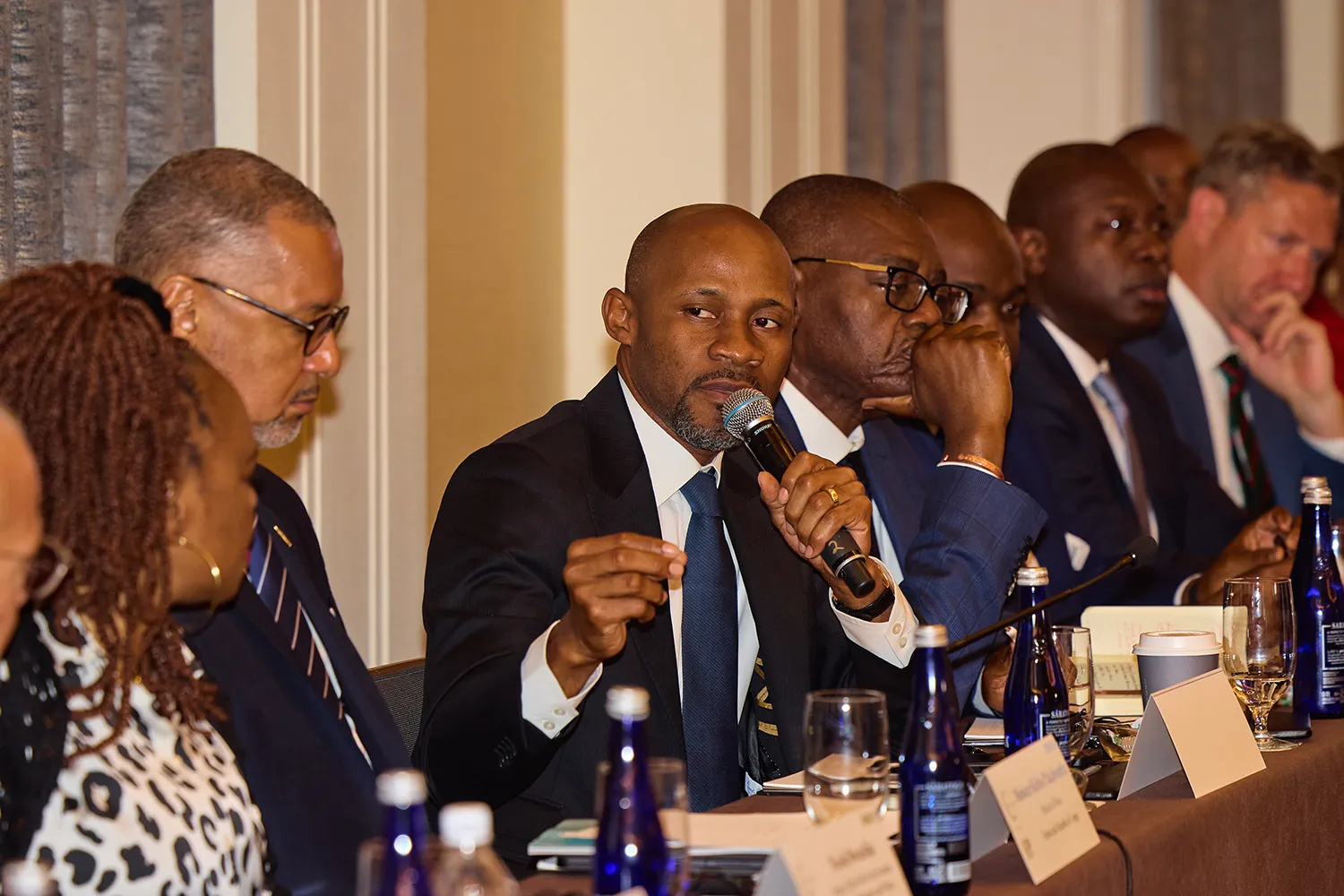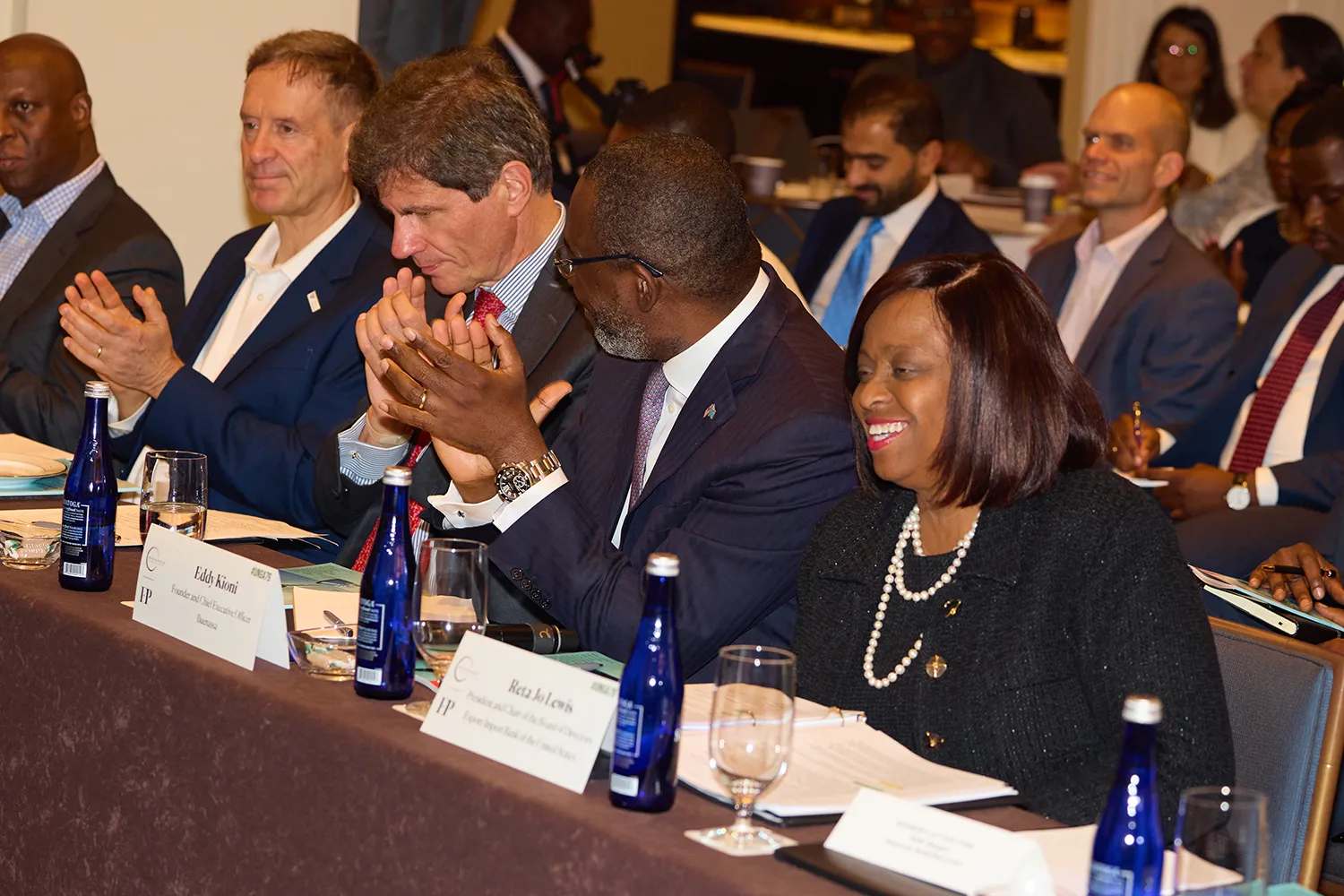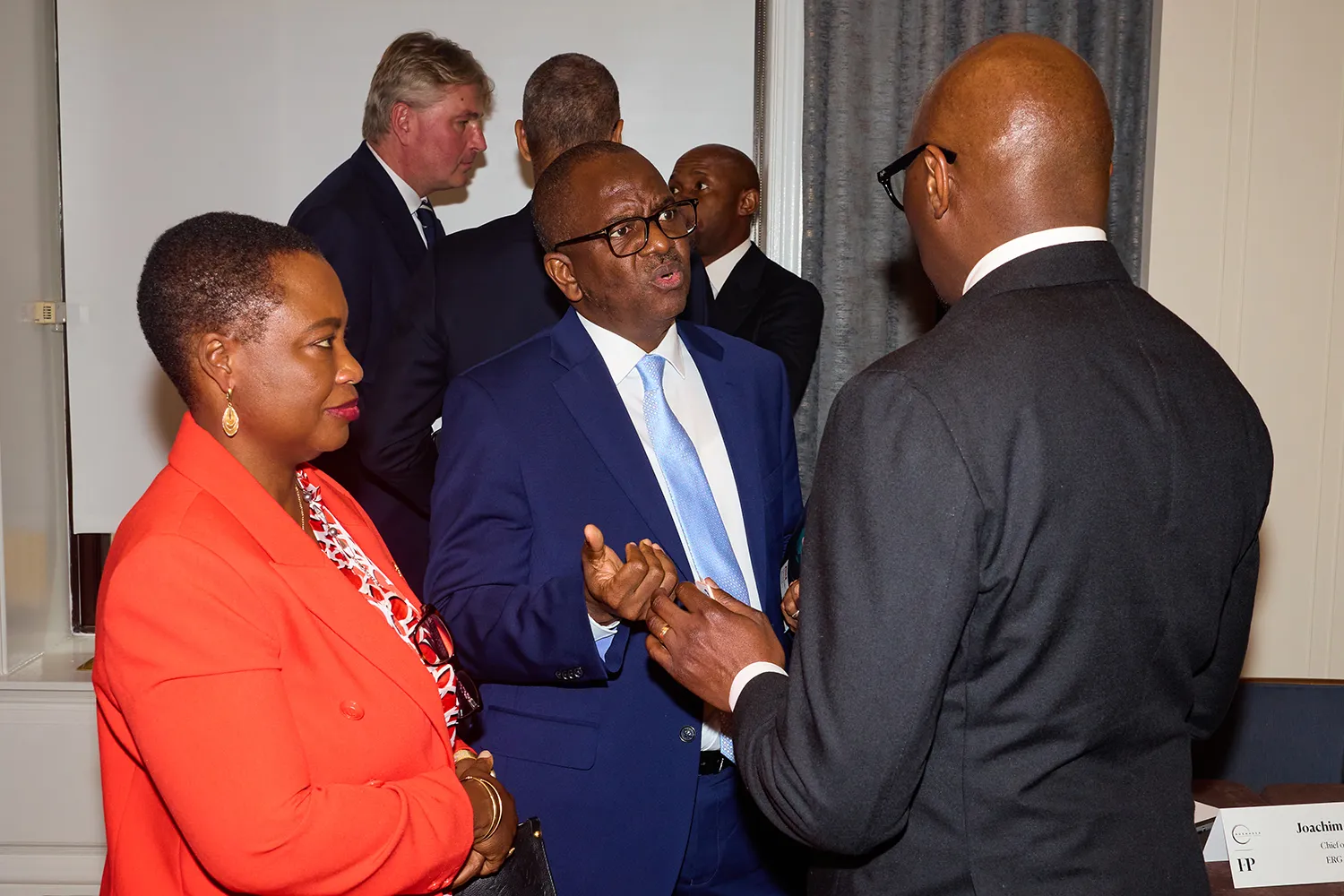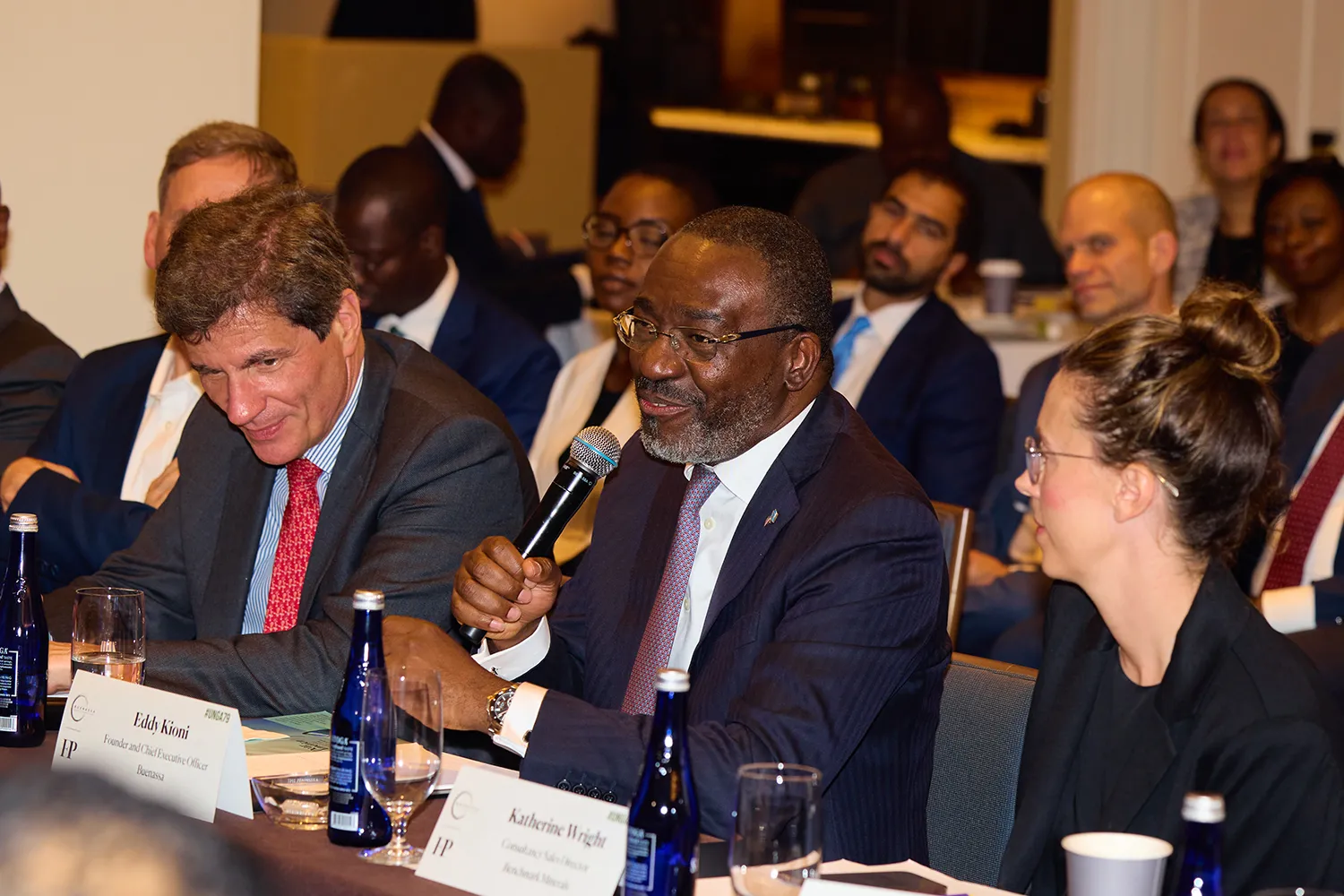Critical Connections
Sustainable Investment in Global Mineral Supply Chains
A Synthesis Report by FP Analytics, in Partnership with Buenassa.
October 2024
In today’s interconnected and technology-driven world, critical minerals and metals form the backbone of the modern economy and are essential to a clean and just energy transition. Demand is surging, with the International Energy Agency (IEA) projecting a quadrupling of mineral demand for clean energy technologies by 2040, further compounded from demands stemming from artificial intelligence, defense, consumer, and other advanced industrial applications. From smartphones to electric vehicles, satellites, and renewable energy infrastructure, these strategic resources are at the core of future economic growth, development, and national security.
The geographic concentration of resources and ownership over supply chains, however, makes them vulnerable to disruptions from trade disputes, civil unrest, natural disasters, and global crises like the COVID-19 pandemic. Known deposits of these mineral resources, notably cobalt, nickel, graphite, gallium, germanium, rare earth elements, lithium, and others, are highly concentrated in a small number of countries that, by and large, lack the processing infrastructure capable of converting raw material into the higher-value chemical inputs that are needed for both high-tech manufacturing and local development. The Democratic Republic of Congo (DRC) is a case in point: It is home to more than 70 percent of the world’s cobalt, 80 percent of the world’s coltan, and vast deposits of copper and lithium. These minerals are vital for the clean energy transition and advanced tech industries, but a significant share is currently being exported to China for processing. The export of these raw materials diminishes opportunities for DRC and other mineral producers to move up the value chain and concentrates processing capability for, and influence over, a range of critical minerals within China. As global demand and competition over these resources intensifies, and national security concerns grow, there is an urgent need for strategic international partnerships and near-term, sustained investments that diversify, strengthen, and secure critical mineral supply chains and contribute to sustainable development.
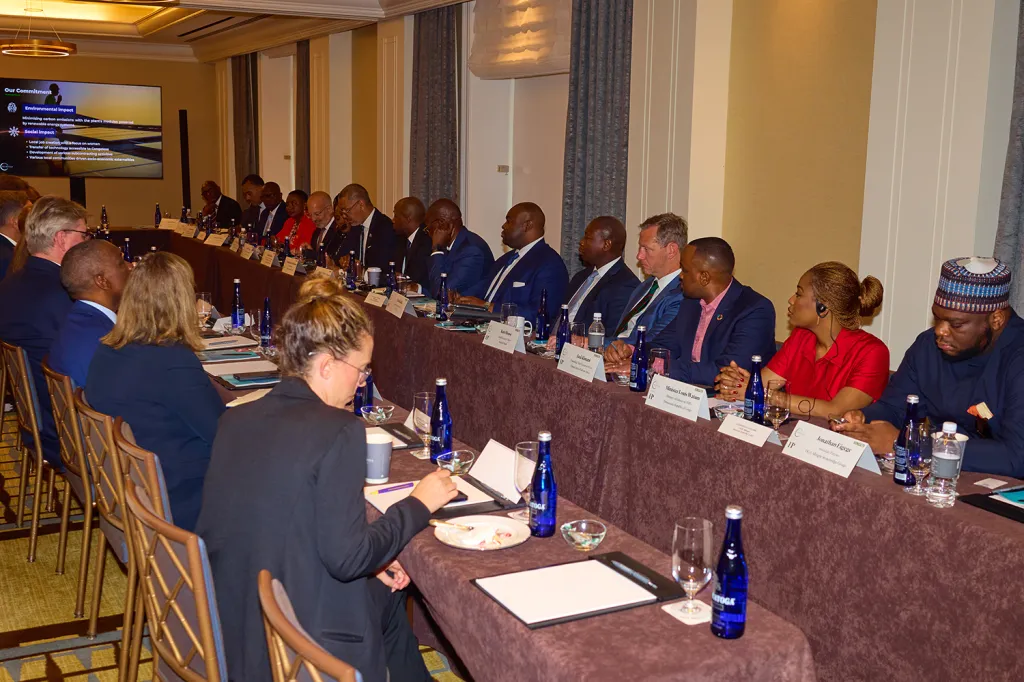
Against the backdrop of Climate Week and the 79th convening of the United Nations General Assembly, Foreign Policy brought together a diverse group of leaders and experts from across government, industry, academia, and civil society for a candid, Chatham House rule discussion on the partnerships and investments needed to accelerate sustainable critical minerals development and the energy transition. This roundtable was produced in partnership with Buenassa, a private Congolese initiative supported by the DRC Government, that is aiming to contribute to sustainable extraction and development of refining, trading, and strategic stockpiling of critical minerals. The high-level, closed-door gathering focused on ways to mitigate real and perceived risks in the sector, foster investment, and establish enduring partnerships aimed at strengthening supply chain security and resiliency.
The discussion focused on:
- Identifying vulnerabilities in global mineral supply chains and strategies to enhance stability and security.
- Exploring innovative technologies and methods to minimize environmental impact while meeting growing demand.
- Discussing financial strategies and partnerships to drive responsible investment in critical mineral extraction and processing.
- Addressing labor issues, community relations, and ethical considerations and good governance in the mining industry.
Key Insights
The fate of the energy transition depends on the accelerated and sustainable development of critical minerals. Participants noted that the world will need approximately 42 times the amount of lithium that we use today by 2050, 25 times the amount of manganese, and 25 times the amount of cobalt, among a range of other minerals and metals to meet our sustainable energy goals, notwithstanding the demands from a range of other high-tech sectors. Not only is the needed volume vast, the timelines for mining investment and production are typically a decade or more, necessitating focused, streamlined action aimed at catalyzing responsible extraction, processing, and refining of these resources in cooperation with the countries where these resources are located, and refined products are used.
Critical minerals are strategic minerals over which international competition is intensifying; strategic, enduring partnerships are needed for development and security. The geographic concentration of minerals and metals within a relatively small number of countries underscores the need to diversify mineral supplies and invest in supply chain resilience to mitigate risk and meet surging demand. The value of these minerals that are essential to advanced technology supply chains renders them “critical” for those in need of supply and “strategic” for those endowed with mineral resources. With a range of geostrategic interests seeking to exploit resources, participants highlighted the near-term opportunities as well as the need for international partnerships to sustainably contribute to local and regional economic development and security.
Minerals development presents an opportunity to “defy history” with strategic partnerships and investments that break the “resource curse.” Establishing clear investment frameworks that support resource-rich economies to move from extraction and export up the value chain to include processing and refining can help reduce supply chain risk and contribute to value creation in-country. Expansion of the industrial base contributes to job creation as well as the knowledge and skills base, conferring direct and indirect economic, social, and security benefits for local populations. Operations within the DRC are expanding up the value chain, with Buenassa noting the gradual increase of refinery production volume to 120,000 tons of copper cathode and 20,000 tons of cobalt sulfate and cobalt metal, with the split to be determined by off-take agreements. As part of these and related efforts, participants noted that project developers in the DRC are working to actively integrate local and artisanal miners into the formal economy, formalize mining cooperatives, improve infrastructure, and set new standards for working conditions. A cross-section of participants recognized that environmental, social, and governance factors are central to attract capital and ensure that benefits are captured by local communities. Participants noted that mining projects must address critical issues such as worker safety, community relations, and ethical standards, and that investment projects must be developed in consultation with affected communities and local non-governmental organizations to ensure that the projects are being developed with the participation of, and respect for, local stakeholders.
Recent production, diversification, and integration initiatives are strengthening supply chain resilience and security. While acknowledging competition from China and the need to accelerate activity, several participants highlighted recent mining and related infrastructure investments aimed at strengthening supply chains throughout the region that have knock-on benefits for other local industries. The Mineral Security Partnership, established by the U.S. Department of State in 2022, for example, has activities spanning 14 countries plus the European Union — representing over half of the world’s GDP — with over a dozen projects underway and 32 projects in the pipeline that are primarily focused on minerals and metals needed for the energy transition. Participants highlighted the Lobito Corridor Project, an infrastructure initiative announced through an EU-US joint statement at the G20 in 2023 that connects the Copper Belt of the DRC and Zambia with the Angolan Atlantic Ocean port of Lobito, as an exemplary project that includes mineral projects and seeks to strengthen regional infrastructure connectivity. The integration initiative, supported largely through development finance, rather than debt, includes trade and transit facilitation and is expected to have knock-on impacts on agriculture, energy, and other regional value chains. The African Development Finance Corporation has also announced several partnerships to deploy capital to the mining sector and related infrastructure networks, which include debt and equity, but also guarantee instruments to mitigate risk.
Investment needs to be channeled upstream with greater collaboration between the public and private sectors to mitigate risk, crowd-in capital, and compete with China. Participants from the private sector acknowledged the importance of these kinds of strategic partnerships, but highlighted — against the backdrop of New York City with among greatest concentrations of global capital — that portfolio managers have hundreds of billions, if not trillions, of dollars to deploy, but they are investing in semiconductors, delivery companies, and other end-use tech applications rather than mining, upon which the viability and profitability of all of those sectors depends. According to the participants, there is a mismatch between the target and the scale of investment needed in mining and co-located processing and refining facilities. More must be done to mobilize and deploy capital upstream, including by addressing issues of credit risk, and helping to increase the comfortability of investors and portfolio managers investing in Africa or any country that is providing cash-flow-positive projects today. Several participants noted long standing and on-going efforts by China to finance projects on terms relatively favorable to private-sector partners, which remain attractive to private sector partners and with whom other developers and strategic interests must be able to compete.
Partnerships must address real and perceived security challenges. Illegal mining and illicit activities continue to adversely impact the investment environment. Illegal mining and fraud remain challenges, often perpetuated by armed groups and criminal networks. Several participants noted that ongoing instability in Rwanda and M23 affiliates have undermined sovereignty and development, and that international cooperation is needed to strengthen regional security and the security of mining sites. Unless addressed and effectively managed, security and instability issues will thwart investment, value creation, and related development.
Greater transparency and oversight of the sector is needed for good governance; enforcing labor standards and working conditions. Efforts are underway within the DRC to enhance traceability and transparency, including through blockchain technology, and to strengthen due diligence and reporting, understanding that these conditions are not only necessary for investors but also for mineral and metal exchanges. Participants noted that regional certification mechanisms do not yet fully meet new market demands for rigorous tracking, accounting, and reporting, and that these will be needed to prevent illegal exploitation and to strengthen the investment environment overall.
Innovative financing tools are being developed, with predictable and bankable projects needed to facilitate capital flows. Recognizing the minerals sector as geo-strategic and economic opportunity, U.S. institutions, such as the Export-Import Bank, are positioned not only to leverage traditional tools including direct loans, working capital guarantees, and export credit insurance, but are working to develop new financing tools to externalize risk and develop joint projects with private-sector partners to provide the kinds and levels of financing to support U.S. and foreign companies exporting in this space. Regulatory predictability, timelines, bankable deals, capacity, and assurances will be needed to translate general agreement on the importance of collaboration into tangible results. Further, regulatory reform and factors creating an enabling investment environment were also referenced by participants. One participant underscored the importance of rules minimizing the time that license holders can control land without investing, for example.
Looking Ahead
While high concentrations of strategic minerals are located within the Democratic Republic of Congo, Zambia, Angola, and other countries in the region, more mapping, research, and exploration are needed to fully assess the minerals landscape and associated potential. Support for geological surveys is being provided through the U.S. Inflation Reduction Act, among other policy measures and private efforts, to more comprehensively understand the scale of opportunity in the DRC and other countries in the region and around the world. In light of surging global demand, the strategic and economic security dimensions, and potential to “defy history,” participants from both the public and private sector highlighted the need for all parties, considering the current geopolitical, market, and environmental dynamics, to redefine how we think about risk. They challenged all stakeholders to identify the policies, investment tools, and partnerships that can crowd-in capital, catalyze deployment, and sustain engagement over the longer term. Such efforts are urgent and essential to sustainably develop the minerals and metals needed for the energy transition, to break the resource curse, and foster greater security and development.

This synthesis report was produced by FP Analytics, the independent research division of The FP Group, with support from Buenassa. FP Analytics retained control over the direction and findings of this report. Foreign Policy’s editorial team was not involved in the creation of this content.

